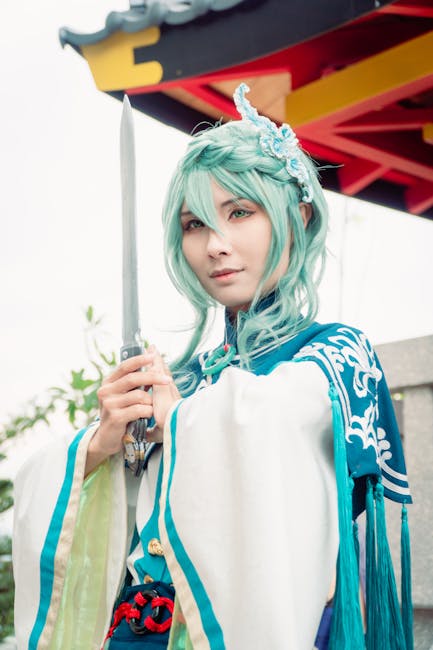Unmasking the Puccini Heroine: A Study of Complexity, Passion, and Tragedy
Giacomo Puccini, the master of Italian verismo opera, gifted the world with some of the most iconic and enduring female characters in operatic history. His heroines, far from being mere damsels in distress, are complex individuals grappling with powerful emotions, societal constraints, and often, tragic destinies. This exploration delves into the multifaceted nature of the Puccini heroine, examining their shared characteristics, individual nuances, and the enduring impact they’ve had on opera and popular culture.
Shared Traits of the Puccini Heroine
While each Puccini heroine possesses unique qualities, several common threads weave through their narratives. A pervasive sense of longing and yearning often defines them. They are frequently trapped by circumstances, societal expectations, or their own passionate natures. Their struggles often involve a conflict between personal desires and the restrictive norms of their time. This tension fuels their dramatic arcs and imbues their stories with profound emotional resonance.
Furthermore, most Puccini heroines are characterized by a fierce independence, even within the constraints of their situations. They are not passive victims but active participants in their own stories, albeit often with tragic consequences. Their strength, however, lies not in physical prowess, but in their emotional depth, unwavering loyalty (sometimes misplaced), and the fierce tenacity with which they cling to love, family, or a sense of self.
Their vocal demands are legendary, requiring singers with extraordinary vocal power, expressive phrasing, and the ability to portray a wide range of intense emotions. The dramatic intensity demanded by these roles has made them the coveted prizes of the operatic world, shaping the careers of countless legendary sopranos.
Mimi from La Bohème: The Consumptive Dreamer
Mimi, the quintessential Puccini heroine, embodies vulnerability and resilience in equal measure. Her delicate health mirrors her fragile existence, trapped in poverty and facing the inevitable decline of her life. Yet, she possesses an unwavering spirit and a capacity for profound love. Her relationship with Rodolfo is a testament to both the fleeting beauty of life and the enduring power of human connection. Mimi’s tragic fate underscores the opera’s exploration of love, loss, and the harsh realities of life in 19th-century Paris.

Mimi’s Enduring Legacy:
- The archetype of the frail yet strong female character.
- An iconic depiction of consumption and its impact on life and love.
- A symbol of passionate love in the face of impending mortality.
Manon Lescaut: The Enigmatic Temptress
Unlike Mimi’s delicate nature, Manon Lescaut is a more complex and morally ambiguous character. Driven by a desire for luxury and pleasure, she navigates a world of deceit and betrayal. Her choices often betray her, yet her vulnerability and occasional moments of genuine remorse prevent her from becoming entirely unsympathetic. Manon’s story is a cautionary tale about the seductive nature of material wealth and the consequences of succumbing to temptation. Her journey is less about a single passionate love and more about the relentless pursuit of an idealized life, ultimately leading to her downfall.
Manon’s Defining Characteristics:
- A morally ambiguous protagonist, challenging simplistic portrayals of good and evil.
- A representation of female agency within a patriarchal society, albeit with tragic results.
- A compelling study of societal pressures and their impact on personal choices.
Tosca: The Passionate and Courageous Diva
Floria Tosca, the fiery and passionate opera singer, is arguably the most iconic of Puccini’s heroines. She is a woman of considerable strength, fiercely protective of her lover, Cavaradossi. Her actions, however, are often driven by intense emotion, leading her down a path of increasingly desperate measures to save him from Scarpia’s machinations. Her ultimate sacrifice reveals her profound love and unwavering commitment, but also highlights the tragic consequences of her impulsive actions.

Tosca’s Enduring Impact:
- A symbol of feminine resilience and strength in the face of overwhelming adversity.
- A character whose passionate nature both empowers and destroys her.
- An exploration of themes of political intrigue, betrayal, and the devastating cost of love.
Other Notable Puccini Heroines
Beyond these three, Puccini’s repertoire boasts other compelling female characters. Suor Angelica, the devout nun in Suor Angelica, embodies spiritual suffering and longing. While a very different character than Tosca or Manon, her emotional depth resonates with audiences. Likewise, Cio-Cio-San (Butterfly) in Madama Butterfly portrays a poignant story of unwavering devotion and heartbreaking betrayal, a character defined by her profound vulnerability and ultimately her tragic end. Each of these heroines adds to the diverse tapestry of female characters woven through Puccini’s operatic legacy.
The Enduring Appeal of the Puccini Heroine
The enduring appeal of the Puccini heroine lies in their profound emotional depth, their complex motivations, and their relatable struggles. They represent the full spectrum of human experience – love, loss, betrayal, and sacrifice – making them compelling and eternally relevant. Their stories continue to resonate with audiences because they speak to universal themes of passion, identity, and the search for meaning in a world often characterized by adversity and tragedy. Their enduring presence in the operatic repertoire serves as a testament to their artistry and their ability to connect with audiences across generations and cultures.

From the frail beauty of Mimi to the passionate fire of Tosca, the Puccini heroine remains a powerful symbol of the enduring strength and resilience of the human spirit, constantly reinterpreted and celebrated on opera stages around the globe.

